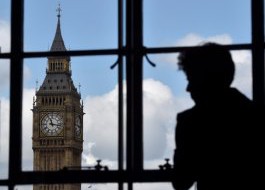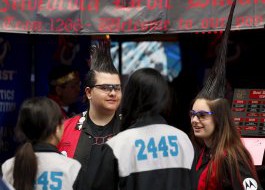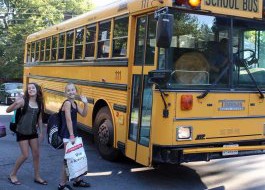 Flickr / Nadia Hatoum
Flickr / Nadia Hatoum
Jennifer Coogan puts it bluntly: If adults can't be trusted to spot fake news, how can we expect kids to know when they're getting duped?
Coogan, editor-in-chief of education startup Newsela, believes children need a middle man to show them the way.
"Their lives are one-hundred percent digital," Coogan tells Business Insider. "And frankly, it's a lot easier in the digital world to create something fake."
Newsela's primary focus is helping kids boost their literacy skills through online news articles, but in the months since the presidential election the company has taken on a more civic-minded role. Across its user base of more than one million American teachers — which represent roughly 75% of American K-12 schools — it wants to mold students into responsible consumers of news.
This is a huge challenge, as there is no shortage of fake news on the internet. One estimate suggests there are dozens of major fake news sites, whose social media followings rise into the millions. Some are intentionally satirical, like The Onion (motto: Tu stultus es, Latin for "You are dumb"), but many purport to deliver straight news with no sign of fabrication.
To help kids separate fact from fiction, Newsela partnered with the American Press Institute in October of 2016. Now whenever kids read an article on their electronic device, in addition to their normal comprehension questions, they're prompted to ask questions about the article itself: Where do the facts come from? Is there a bias? What's missing from this piece?
"That'll be like a mini-research project for the student," Coogan says.
Teachers can ask kids probing questions about the outlet, including where it's headquartered, where it receives funding, and what affiliations its members might have. No one would go to such great lengths reading the morning paper, Coogan says, but it's meant to be overkill in order to instill healthy levels of skepticism.
"It's a good exercise to always question the source of the information," she says.
 Flickr / Elvert Barnes
Flickr / Elvert Barnes
Historically, parents would help their kids discern what's real and fake. But Coogan argues there is a fundamental divide that exists in how parents and kids consume their news. Parents grew up with reputable, hard-copy sources at a time when producing fake news was an elaborate process.
"You'd have to get a printing press and roll out a bunch of issues of your fake newspaper," she says.
Today's young readers are digitally native, which means their news sources are, too. Parents who are familiar with only a few big-name publishers will struggle to offer any help in gauging which of these sources are trustworthy. They know the New York Times and Wall Street Journal are real, but what about AmericanNews.com and Infowars? Each sounds reputable enough, but both have been flagged as untrustworthy.
"Even if [children] come from a family where the parents are news junkies," Coogan says, "the way parents are consuming news is just not going to foster home training."
Newsela's approach has seen some early anecdotal success at getting kids to question what they read, and to filter out the sensational and suspicious, but concrete data is hard to come by. The larger goal is to move kids toward feeling confident that what they read is true and fair.
"I do think the onus is now on the teacher" to groom kids' savviness as readers of the news, Coogan says. "Maybe it does need to become a new standard."




